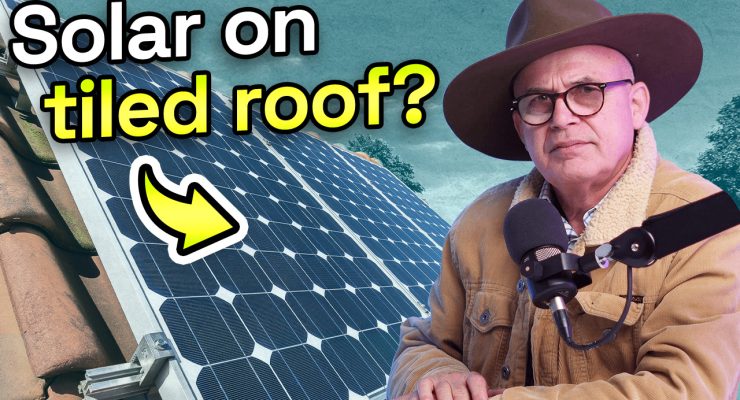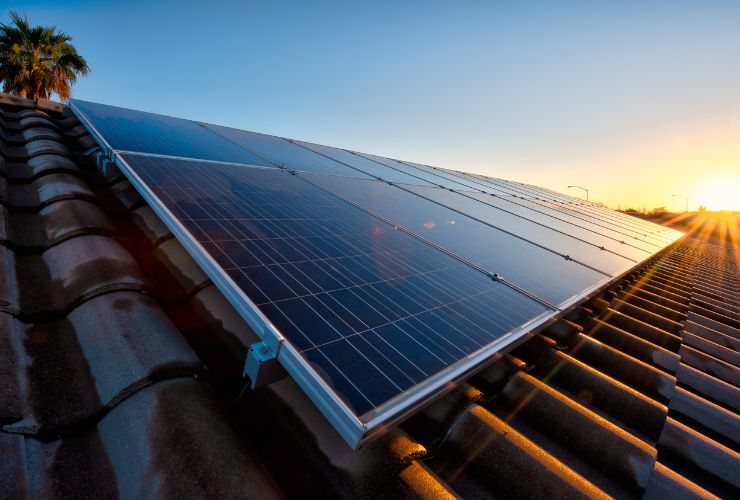
Fast read
Solar panels are fixed to tiles using a tile bracket, which is screwed into the roof's timber structure and has a metal arm protruding above the tile to hold the solar system rails. The panels are usually about 100 mm off the roof tiles to allow air circulation and cooling. The weight and load of the solar system are evenly distributed across the roof and should not require additional bracing in non-cyclone areas.
Ensuring the roof remains waterproof during installation is crucial, as a gap between the tiles and the bracket could lead to water damage. High-quality solar installation companies will consider these considerations to ensure a secure and reliable installation.
How are solar panels installed on tile roofs?
When you walk along the street, you see a tile roof, and they have solar panels on top. You might sometimes wonder how they got these solar panels to stay on the roof when they have tiles.
You might think – maybe such a solar panel installation is fragile, and the panels could come off over time. However, it is safe, and the panels, if installed correctly, will not go anywhere. This is because they are connected with screws directly into the roof’s timber structure.
This connection is undertaken by what is known in the solar industry as a tile bracket. First, the bottom part of the bracket is screwed into the rafters. Following this, a metal arm will protrude above the tile, thus allowing the solar system rails to be fastened onto this arm.
The tile brackets are usually spaced between 1.5 and 2 m apart, and in high wind load areas, they will be even closer together. It has been observed that cheap solar system installs skimp on the tile brackets to save time and money. But, unfortunately, they are making such installations less robust.
Weight and load of the system
The way the panels are installed with these brackets sees them located about 100 mm off the roof tiles. This allows air circulation below the module. In hot summer weather, the air circulates between the solar panels and the tiles, cooling the panels.
Solar power systems are gaining popularity in non-cyclone regions of Australia. This is because of advancements in technology and increased awareness of the benefits of renewable energy. When adding solar panels to roofs, it’s important to think about how much weight the roof can handle.
The weight of the standard solar system is around 20 kg per square meter, which is safe for regular roofs. The racking and panels evenly distribute their weight on the roof, so no extra support is needed in those areas.
This design makes sure that installing it is efficient and doesn’t affect the existing roof structure much.
Homeowners can use solar energy without worrying about damaging their roofs, as the technology is compatible with standard roofing. This method supports sustainability and offers an easy solution for people who want to use solar power at home.

Ensure waterproofing on tile roofing
If you are fixing solar to your roof, one of the most important considerations when installing solar modules on a tile roof would be to ensure the roof stays waterproof.
So in some terracotta and concrete tile profiles, the installer would have to grind a parallel grove into the tile. So that when the tiles sit back down on the bracket. The bracket doesn’t lift them; they sit back in their original position.
Because if you get the tiles lifted and it rains, the pounding rain will slip under the tiles into the gap and wet the roof space. Mouldy insulation or soggy gyprock could be the result of cutting such corners.
Again, the difference between a cheap and a quality-focused installation company.